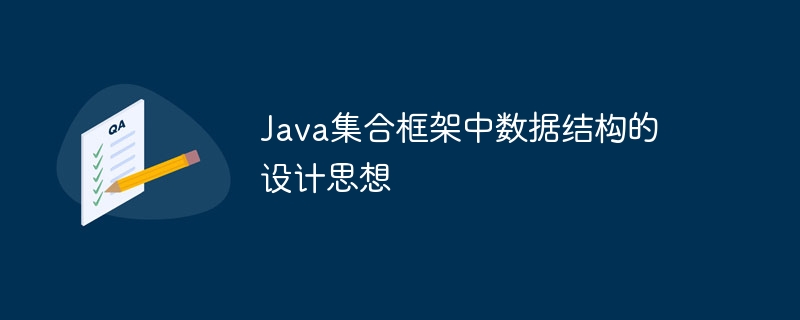Home >Java >javaTutorial >Design ideas of data structures in Java collection framework
Design ideas of data structures in Java collection framework
- WBOYWBOYWBOYWBOYWBOYWBOYWBOYWBOYWBOYWBOYWBOYWBOYWBOriginal
- 2024-04-12 10:42:011060browse
The collection framework data structure follows the following design philosophy: Dynamic arrays (ArrayList) are suitable for fast access, but not suitable for insertion/deletion. LinkedList is suitable for insertion/deletion, but not for random access. Hash tables (HashMap) are suitable for fast lookups/insertions, but the iteration order is undefined. Trees (TreeSet/TreeMap) are suitable for range search/insertion, and the elements are ordered during iteration. Stack/Queue is suitable for sequential access and follows the last-in-first-out (LIFO)/first-in-first-out (FIFO) principle.

Data structure design ideas in Java collection framework
Introduction
Java Collections framework provides a series of data structures for efficiently organizing and storing data. The design of these data structures follows some important ideas to meet different application requirements.
Dynamic Array
ArrayList uses a dynamic array to store elements. It automatically resizes the underlying array when the list size increases. This implementation provides fast access, but inserting and deleting elements is relatively slow because of the moving and reallocation of the array involved.
Linked List
LinkedList uses link nodes to store elements. Each node contains a reference to the data and a pointer to the next node. Linked lists support efficient insertion and deletion operations because elements do not need to be moved. However, it is slower in terms of random access since each element must be traversed one by one.
HashMap
HashMap uses a hash function to map keys to values. The hash function converts the key into a unique hash code that is used to determine the bucket location. HashMap provides fast search and insertion operations, but the order in which the elements are iterated is undefined.
Tree
TreeSet and TreeMap are tree-based data structures. TreeSet stores a collection of unique elements, sorted according to the provided comparator. TreeMap stores key-value pairs and sorts them based on the key. The tree structure supports efficient range lookup and insertion operations, but iterating elements is sorted.
Stack and Queue
Stack and Queue are linear data structures. Stack follows the last-in-first-out (LIFO) principle, while Queue follows the first-in-first-out (FIFO) principle. Stack and Queue provide simple insertion and deletion operations and are useful when working with elements that require sequential access.
Practical case: Choosing the appropriate data structure
Suppose you want to develop a music player and need to store a song list. You can use the following data structure:
- ArrayList: This is a suitable choice for storing a large number of songs as it provides quick access and is easy to manage.
- LinkedList: If you need to insert or delete songs frequently, then LinkedList will be a better choice.
- TreeSet: If you need a playlist of songs sorted by song name, then TreeSet would be an ideal choice.
- Stack: If the player supports replay and forward buttons, then Stack would be a good data structure because it follows the LIFO principle.
- Queue: If the player needs to arrange songs into a play queue, then Queue will be a good choice because it follows the FIFO principle.
The above is the detailed content of Design ideas of data structures in Java collection framework. For more information, please follow other related articles on the PHP Chinese website!

